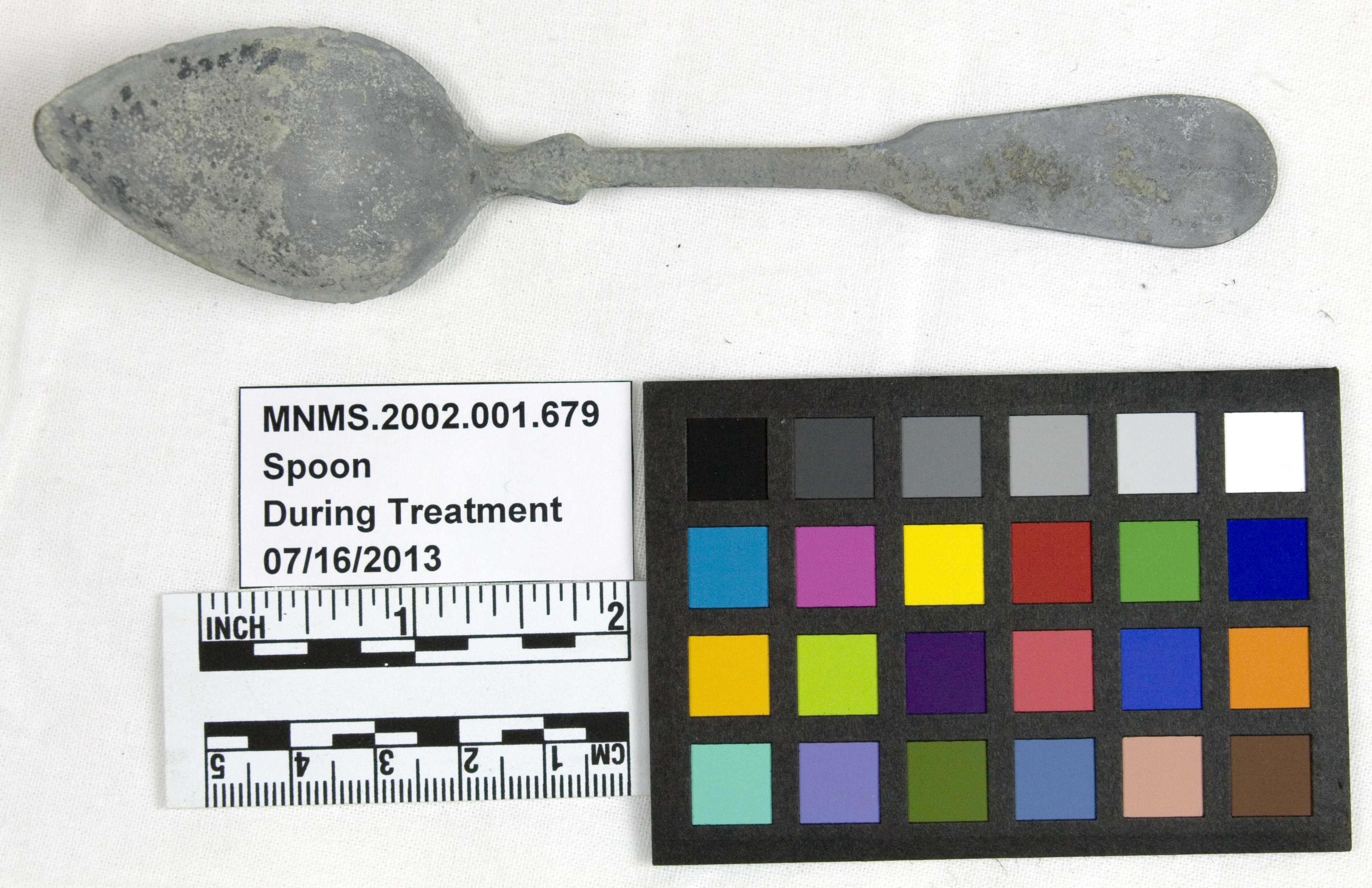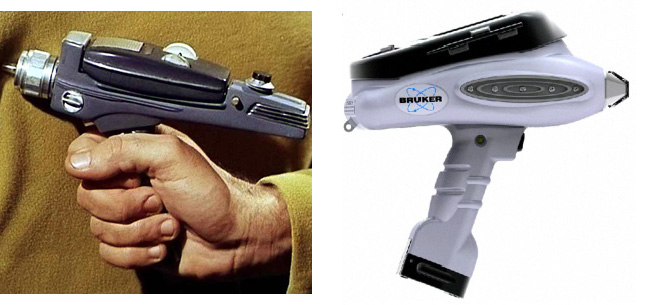Christmas came early to the Monitor Center this year. We were recently able to purchase a refurbished Bruker Tracer III-SD portable XRF (x-ray fluorescence). We have been able to borrow one of these devices from Bruker in the past, and it is a fabulous piece of analytical equipment. You may remember that we talked about using one on the condenser tank a few months ago. Through non-destructive testing, which conservators are a big fan of, this machine will tell you the elements present in your sample, or in our case, artifact. There are some limitations, but it works really well with identifying metals. I had the chance to use the XRF less than a week after its arrival in the lab for just this purpose on a spoon I am currently treating.

The spoon’s official during treatment photograph.
This particular spoon had been previously treated. The records for this object state that it was likely a silver spoon. We have other flatware in the Monitor collection that we know to be made of silver. Closely comparing this spoon visually to other spoons, one begins to have the sense that perhaps one of these things is not like the other. And this sets the conservation senses tingling, because if it’s not made of silver, than what it is? I admit I had a hunch, but while hunches are all well and good, analytical fact is another thing entirely. Enter our shiny, new XRF, which only mostly looks like a Star Trek phaser.

An Original Series Star Trek phaser vs. a Bruker portable XRF.

The Star Trek phaser in action, difference here: the XRF does not fire a red beam, nor do we have to hide behind rocks to use it.
Following a round of testing and examining the resulting spectra, I had my answers. The spoon in question was not made of silver. I can say that it is definitely a tin alloy. The other metals present, antimony, copper, and just a little bit of lead indicate that this is most likely a pewter spoon. It may have been a crew member’s personal belonging.
Check back to the blog soon for more updates from the lab.